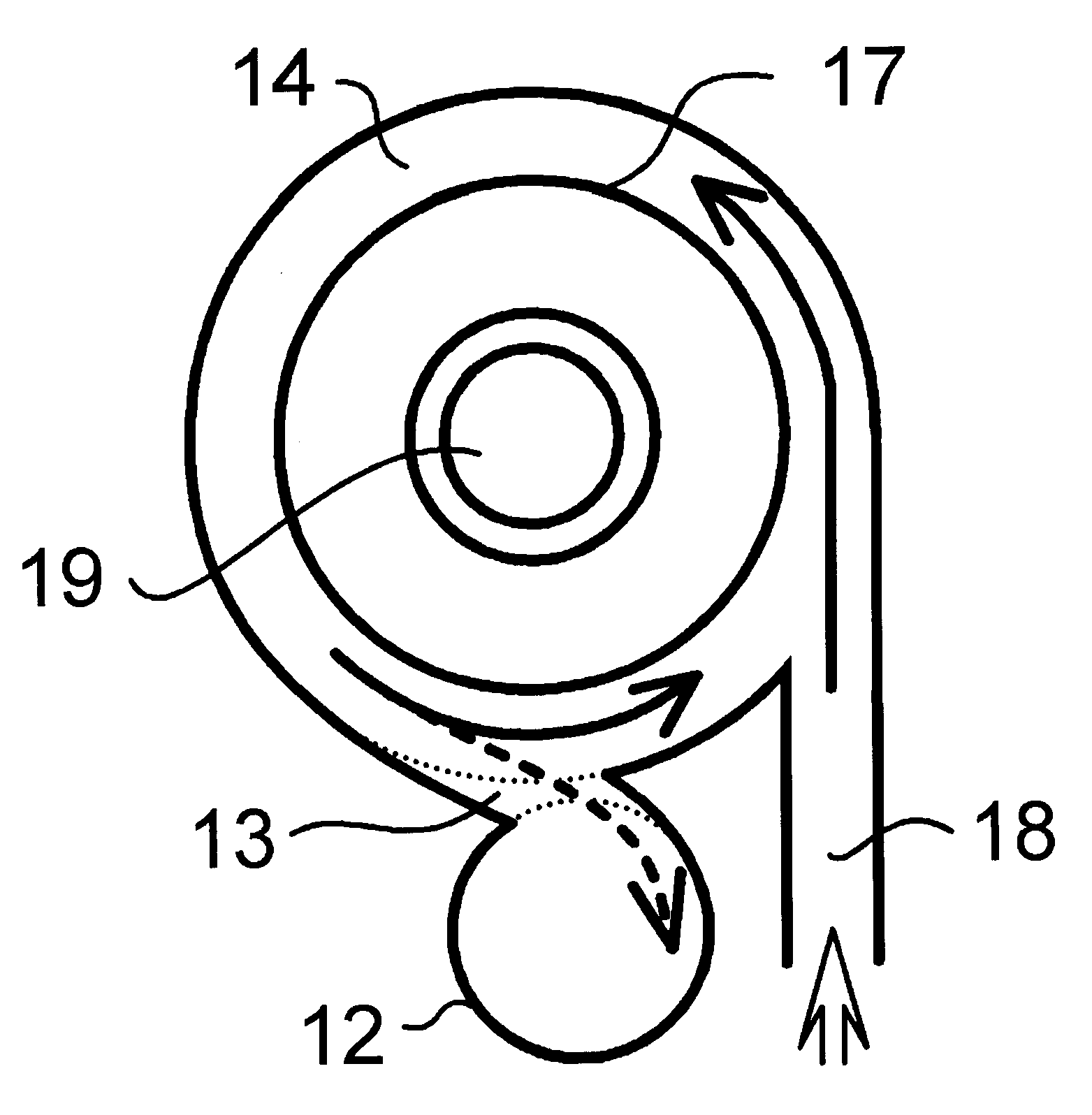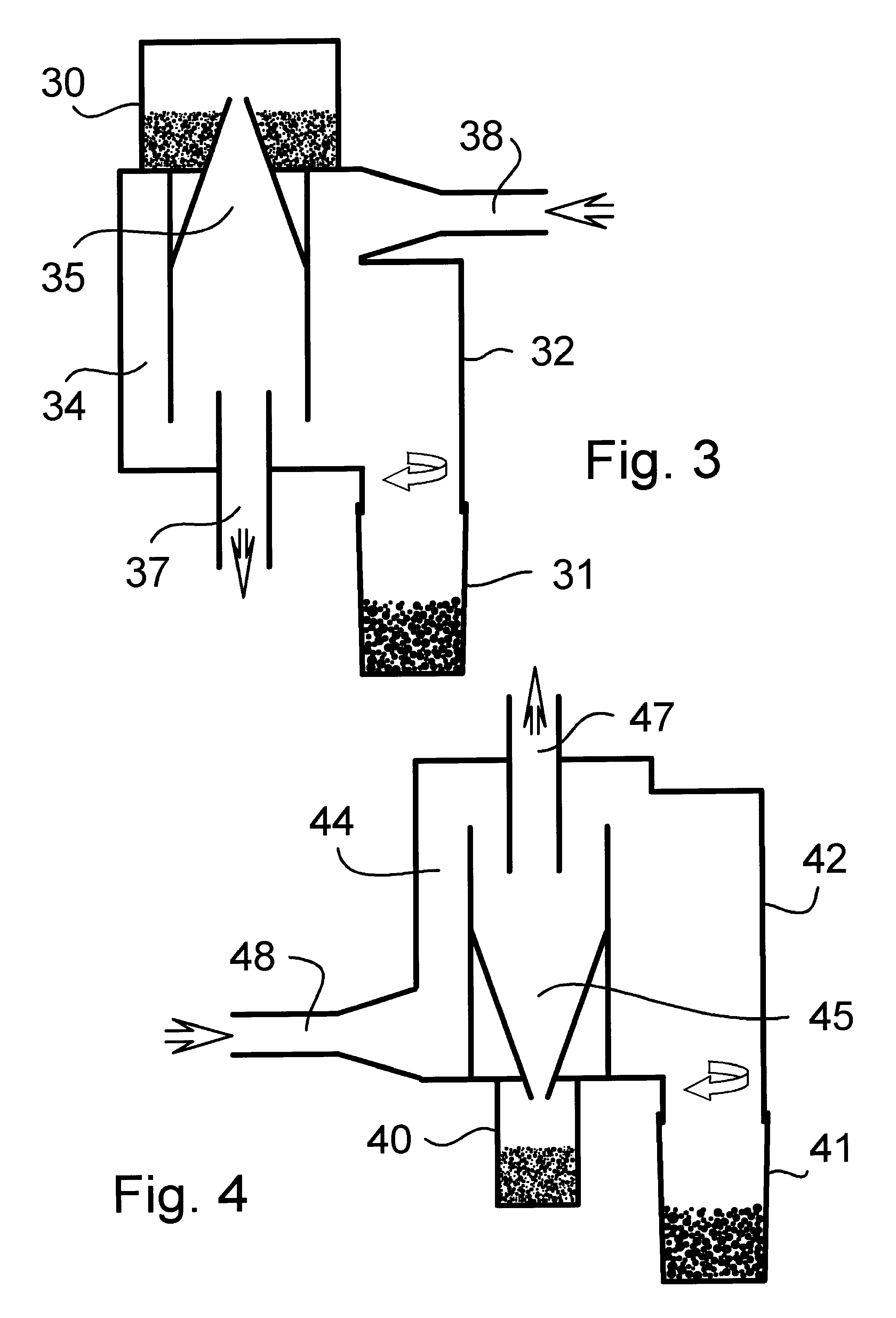Cleaning apparatus
a technology of cleaning apparatus and airflow, which is applied in the direction of application, dispersed particle filtration, and using liquid separation agents, can solve the problems of low airflow weight loading and other problems, and achieve the effect of preventing the transfer of heavier parts and improving the retention of lighter parts
- Summary
- Abstract
- Description
- Claims
- Application Information
AI Technical Summary
Benefits of technology
Problems solved by technology
Method used
Image
Examples
Embodiment Construction
[0022]Referring to FIGS. 1 and 2, the apparatus consists of a primary chamber 11 and a secondary chamber 12 joined by a generally chordal interconnection neck 13, the walls of which are constituted by respective wall portions of the primary and secondary chamber being tangentially deformed and joined to the other chamber. The primary chamber 11 has an upper cylindrical portion 14 and a lower co-axial cyclone separator 15. An inner flange 16 is disposed between the upper and lower parts; the flange has an upwardly-turned inner peripheral lip 17. The flange 16 is not essential.
[0023]A tangential inlet 18 is provided at the upper end and also an axial outlet 19 for exhaust air; an electric motor (not shown) draws air through the apparatus, or alternatively may blow air through under positive pressure.
[0024]Removable collection vessels 20, 21 are provided to the cyclone separator and secondary separation chamber respectively. As shown by the arrows, inlet air is constrained by the outle...
PUM
| Property | Measurement | Unit |
|---|---|---|
| Flow rate | aaaaa | aaaaa |
| Diameter | aaaaa | aaaaa |
| Radius | aaaaa | aaaaa |
Abstract
Description
Claims
Application Information
 Login to View More
Login to View More - R&D
- Intellectual Property
- Life Sciences
- Materials
- Tech Scout
- Unparalleled Data Quality
- Higher Quality Content
- 60% Fewer Hallucinations
Browse by: Latest US Patents, China's latest patents, Technical Efficacy Thesaurus, Application Domain, Technology Topic, Popular Technical Reports.
© 2025 PatSnap. All rights reserved.Legal|Privacy policy|Modern Slavery Act Transparency Statement|Sitemap|About US| Contact US: help@patsnap.com



